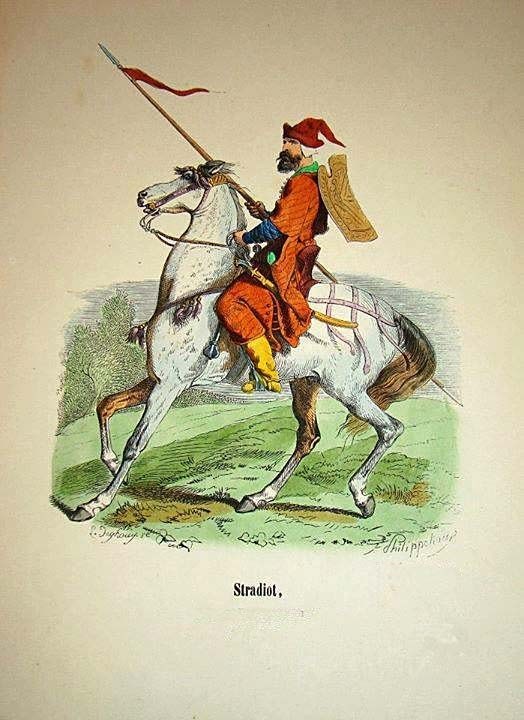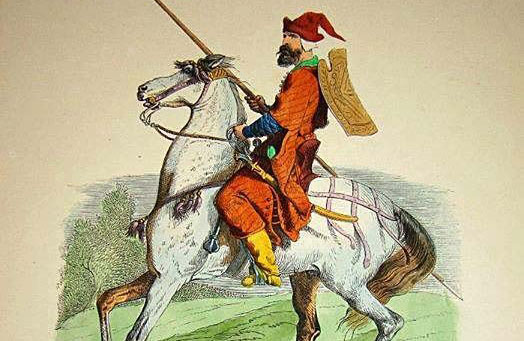Like today 448 years ago the city of Famagusta passed into the hands of the Ottomans. Brothers Velissarios, Markos and Vikos were among the defenders of the city
On August 5, 1571, exactly four hundred and forty-eight years ago, the city of Famagusta, the last stronghold of resistance on the mainland during the war of 1570-1571, came under Ottoman rule. After relevant consultations and assurances between the Venetian commander of Famagusta Markandonios Bragadin and Lala Mustafa Pasha, who had led the Ottoman land forces against Cyprus, the city, the key to the kingdom, was handed over to the Ottomans. The resistance of the defenders and the people of Famagusta lasted almost a year and the expected help of the Holy Alliance (Sacra Liga) from the West never arrived. The conditional surrender of the city was an insurmountable need to save its defenders and inhabitants, who no longer had any food or ammunition. With great formality and dressed in the official attire of his high office, the Venetian city governor Marcantonios Bragadin and all his entourage went to the tent of Lala Mustafa and offered him the keys to the city. In the relentless heat of the Cypriot summer, Bragadin was also accompanied by his servant Andreas with a parasol to provide him with shade. What a tragic, true, irony with what followed…

The terms of the surrender, as is well known, were not observed and all the officials of Bragadin's entourage were not slaughtered, while for himself Mustafa Pasha reserved the cruel martyrdom of death by skinning. The completion of almost four and a half centuries from the first Ottoman occupation of the city and in the climate of the days with the illegal claims of the Turks for the city that has remained deserted since 1974, with our today's publication we return to the climate of that time. Our subject, three defenders of Famagusta in 1571 from Methoni based on Venetian sources.
"A duchy for every Ottoman: The members of the light cavalry, among them the three brothers, raided the Ottoman camp at night and carried the heads of those killed to the city. For each head he was paid by Bragadin with a duchy. "
A large number of light cavalry (stradioti), mainly Hellenized and Christianized Albanians serving in the Venetian army, arrived in Cyprus on the eve of the Ottoman attack, at the behest of the Venetians, to strengthen and shield its defense. Light horsemen had also settled with their families in Pomos and Tillyria, after the fall of Monemvasia and Nafplio in 1540 to the Ottomans. At that time, the people of Nafplio were given stradioti and a village near Avgorou, called Avita dei Napolitani, which could be interpreted as life for the people of Nafplio. Many facts about the activity of light horsemen in Cyprus during the war of 1570-1571 are found in Venetian documents. These are mainly requests to the Venetian government, made by stradioti who were still in captivity or recently released or even relatives of the dead stradioti. These documents were written after the end of the war and mainly after the signing of a treaty in 1573 between the Venetians and the Ottomans and after the first exchanges and the release of prisoners. One of these requests reveals, among other things, the works and days of three brothers from Methoni, defenders in 1571 of Famagusta.
In defense of Famagusta
The three brothers Velissarios, Markos and Vikos from Methoni with a request to the Venetian authorities, dated November 18, 1574, talk about their family, their services in Galinotati and about what they lived defending Cyprus during the terrible war of 1570- 1571. There were, as they write, children of Nikolaos from Methoni (Nicolo da Modon) who served as commander of a light cavalry company in Carpasso (Carpasso) in Cyprus. On the side of their mother, who was from Nafplio, they were nephews of the general commander of the light cavalry of Cyprus and knight Petros Rontakis as well as of Gini, Kontos and Andreas.
Their father had died in Cyprus in the service of the Most Serene long before the Ottoman invasion. However, their uncle, their mother's brother, the brave Petros Rodakis, after first defending Nicosia, after its fall to the Ottomans, succeeded and took refuge in Famagusta. There finally, as the three brothers note in their request, he was killed during the savage siege of Famagusta. Andreia also fought defending Famagusta and their uncles Guinness, Kontos and Andreas.
Velissarios states in this request that for many years he was a lieutenant, both before and during the Cyprus war, of his brave uncle - now deceased - Gini, while his brother Vikos was his flag bearer. The third brother, Marcos, was a lieutenant of his uncle Andreas. When the Ottoman army reached Cyprus, the three Rodaki brothers: Ginis, Andreas and Kontos, together with their battalions as well as the three brothers Velissario, Marco and Vico, rushed to Famagusta to defend it. There their uncle Guinness was appointed general commander of the light cavalry of Famagusta.
According to the three brothers, in a battle that took place outside Famagusta and they had also taken part, their uncle Guinness received two blows from the enemy and after being transported to Famagusta after a while he exhaled. In this confrontation, the brave stradioti killed fourteen Ottomans and captured others alive. They then transported to the city the heads of the slain enemies as well as six horses, which they handed over to the military commander of the city, the later heroic martyr, as stated in the document, Marcantonio Bragadin. After Guinness's death, according to his nephew Velissarios, he took command of his company.
As commander of this company, Velissarios went to Komi tou Gialos, a village, as he notes, located ten leagues away from Famagusta, where many Ottomans had disembarked from two enemy galleys. Velissarios and his company attacked the enemy and inflicted many losses. Among other things, they managed to capture an Ottoman alive and take him to the governor of Famagusta. In another case, the three battalions of the light cavalry of the Rondakis together with the Italian military battalion (milicia italiana) and the Greek (milicia greca) had another military success at Agios Sergios. Agios Sergios, the three brothers note in their letter, is a village three leagues outside of Famagusta. Sinan Pasha had encamped there with an army consisting of infantry and cavalry. The encampment of the enemy in Agios Sergios prevented the transfer of supplies to the city. In a battle that followed they forced the enemy to leave the area and camp elsewhere. The defenders of Famagusta returned victorious to the city carrying many loot.
Members of the light cavalry (stradioti) during the siege raided the Ottoman camp at night and carried the heads of those killed to the city as well as loot. For each head he was paid by Bragadin with a duchy. The three brothers Velissarios, Markos and Vikos too many times had taken part in such surprise raids during the night in the enemy camp and were returning with great success. In one case, however, Velissarios and Markos were wounded in the legs, while Vikos lost his horse, which was fatally wounded. One such raid was made by the three brothers one night near the Goose Tower. Outside the walls of Famagusta there was a tall tower, which served as a lighthouse so that the ships could dock safely in Famagusta. The tower was destroyed during the siege of Famagusta. It is mentioned in all the sources of the fall, but until recently we did not know exactly what it was and where the Goose Tower was. A Venetian manuscript recently revealed to us that it was a lighthouse tower in the port of Famagusta. In a raid on the Goose Tower, which they had carried out, among other things, the three brothers managed to snatch a beautiful black horse from the enemy, which after transporting it to the city they handed over to Marcantonio Bragadin.
After handing over the city to the enemy, the three brothers were taken prisoner. The wife and children of Belissarios, one of the three brothers, were also taken prisoner. They were liberated in 1574 when the king of Wallachia (Re di Vlachia) paid three hundred and sixty sequins to the Ottomans. To make up for their release, they borrowed and still owed seventy sequins. But Belissarius' wife and children were still slaves. The three stradioti from Methoni, who had fought during the defense and the defense of Famagusta, at their request to the Venetian authorities asked for financial support for the release of their captive relatives. They also recalled their services to the Most Peaceful Republic and showed the wounds they inflicted on their bodies due to the war. Their main request was to be appointed to some battalions of the light cavalry of the Republic of Venice, to spend the rest of their lives with dignity.
The settlement of the stradioti on the mainland as well as their contribution to the war in Cyprus seem to confirm what the historian Konstantinos Sathas wrote at the end of the 19th century, that is, “[ Song of the fall of Cyprus under the Ottomans:
Cyprus in a hurry that throws a bat
He shoots soldiers with aprons, soldiers with sticks ".
EIKONA: Icon of a stradioto on horseback, as were the three brothers who were captured after the surrender of Famagusta.
Source: CITIZEN / WINDOW / Nassa Patapiou
